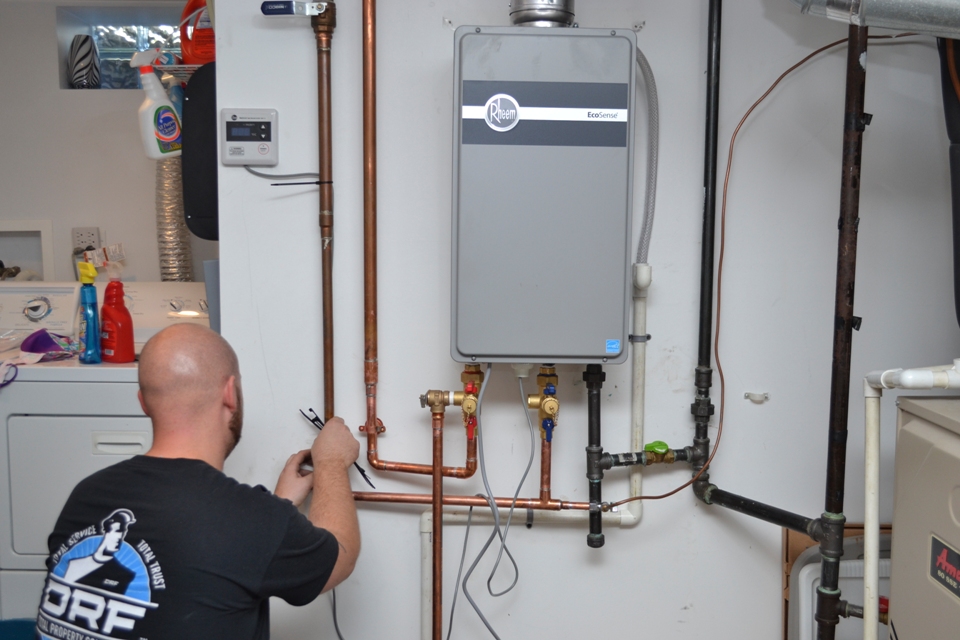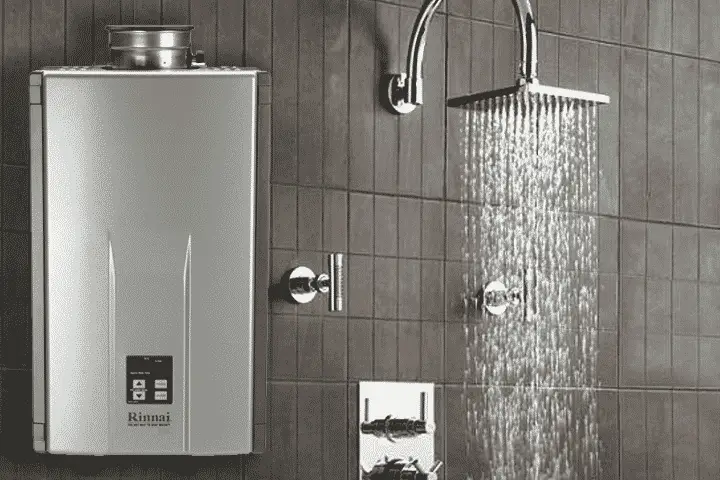We always appreciate the plan of changing to a tankless water heater. Being relatively smaller than the traditional water heaters, tankless heaters can be wall mounted. Saving energy and cost is also a key benefit of the tankless water heater. Mainly, the gas tankless water heater is the best choice. Also, the tankless gas water heaters come with a lot of disadvantages in the long run. Still, they are great.
But how to install a gas tankless water heater? Asking for help from any professionals? Why not do it yourself? We can help you with all the required steps and information.
How a gas tankless water heater operates?
Learning to understand how any machine operates can help in installing it. Rather than storing and heating the water, tankless water heater heats water directly. Featuring a flow sensing device, the machine can detect water flow whenever the hot water tap in opened. The unit, of course, operates using a gas burner. Need not worry about the hot water reaching its end limit. When the work is done, just close the hot water tap. After that, the flow sensing device will stop the heating process immediately.
How to install a gas tankless water heater: Simple steps
Asking for the help of any professionals may cost you some bucks. But learning to install it can help one to fix any problem with ease. There is no telling when one needs to unmount the device when certain circumstances arise. Changing the residence or any other problem, learning to install the device will always lead to learning the uninstalling process. Step by step instruction can always be a great guideline for the newcomers. So, this part is going to do that.
Step 1: Taking proper caution
Taking proper caution is the first priority. A gas tankless water heater always requires a larger diameter in gas lines. Check out the larger diameter exhaust system and gas supply line. Any beginner who wants to do it himself needs to take major caution about the matter. Otherwise, there will be harsh consequences.
Step 2: Installing special union connector
We highly recommend that you use a special union connector sets for the water supply. Remember, this will employ water bypass capability. One of the key reasons for doing so is that it will ease and delimit future maintenance.
Step 3: Starting to work, turn off the main water line and disconnect the old water heater
After taking all the necessary precautions and material collection, get started with the job. First, start off with turning off the main water line to the house. This is just to avoid any problem. Also, this will help you to install the device with ease. Right after closing the main water line, disconnect the old heater from the supply line. Still, there may be some water in the line. Even after closing the main water line, there can be water. Placing a bucket under the pipe will help you to collect that water. Avoid letting the water to spread will ensure avoiding any risk or heavy injury.
There is still more to that. Disconnect the old heater from the heat source. For gas heaters, disconnecting the supply valve is mandatory. But be careful while doing so. On the other hand, to disconnect electric water heaters, just disconnect the plug.
After disconnecting the old water heater make sure it is totally removed. Placing it on the parking space seems a good idea. But when you want to dispose of the heater, make sure you maintain the laws of the area you are living in.
Step 4: Unbox the tankless water heater
Take out the newly bought water heater out of the box. After unboxing the device from the carton, place all the packed hardware and instruction menu close at hand. Checking out the details of the hardware, the operation is a good idea. Try to follow the instructions of the menu. The menu will give you a brief idea about the model of your device.
Step 5: Choosing the mounting location
After unboxing and reading the instructions, choosing the location becomes important. Determining a place that suits the appliance provide better support and living condition. Also, make sure that you are allowed for complying the device according to the local and building codes. The location is always specific but needs to be safe. Check out that the appliance will not make any problem for your day to day life.
Step 6: Mount the tankless heater
Right after choosing the location, mount the heater into the wall. Make sure the mount supports the weight of the appliance appropriately. Check out the instruction menu for more support.
Step 7: Hook up the gas and water connection
When the mounting is done, cautiously hook the gas connection. Install ventilation duction for reducing heat. Gas burner heaters produce a lot of heat. The ventilation duction can save you from the heat. Tankless heater generally requires a larger flue. Purchasing of special stainless steel flue will also help. Connecting the gas connection is the real deal. The hard part of the whole task. But by taking proper caution, the task is smooth.
After connecting the gas line, attach the heater with the water connection. Mainly, the hot water tap.
Step 8: On with the heat source
Gas tankless water heaters require hooking the gas supply line from the stub at the wall to the appliance. After hooking up the supply line, opening the valve will do the rest. Make sure the handle stays in the same direction as the gas line.
Step 9: Operate the heater according to the instructions
All the setup is complete. Now to operate the machine. Asking the help of the user manual will help you to operate the device. Follow the manufacturer decision, light the pilot on the gas water heater. Right after that, you are good to go on a hot shower.
Some of the important FAQ
What are the main power sources for the tankless water heater?
Mainly there are two power sources for tankless water heaters. One is powered by electricity and the other is powered by gas.
How the tankless water heater operates?
The tankless water is fueled by electricity or gas. It does not heat the water by storing. The special flow detecting device installed on the appliance can detect water flow when one opens the supply line. The heating process starts and you get instant heating.
What are the main disadvantages of a tankless water heater?
Though the appliance saves a lot of power, the appliance is costly. The flow of heated water is limited due to the unit’s capacity to heat water. You cannot expect instant hot water. You need to wait for the water to be heated. Not only that but you will be getting just a limited amount of heated water. While power outages, there will be no heated water. The device is also complicated.
Conclusion
Getting a shower after a long day’s work can be soothing. The heated water can make the sower top notch. But it is the water heater that does the trick for you. Tankless water heaters are popular though coming with a lot of disadvantages. One thing for sure, the advantages are also not too low. Just because the appliance is costly, the installation fee can also be costly. Installing it yourself can reduce the cost. Learning the process is easy. Just follow some simple steps and you can install a tankless water heater like a professional in no time.



